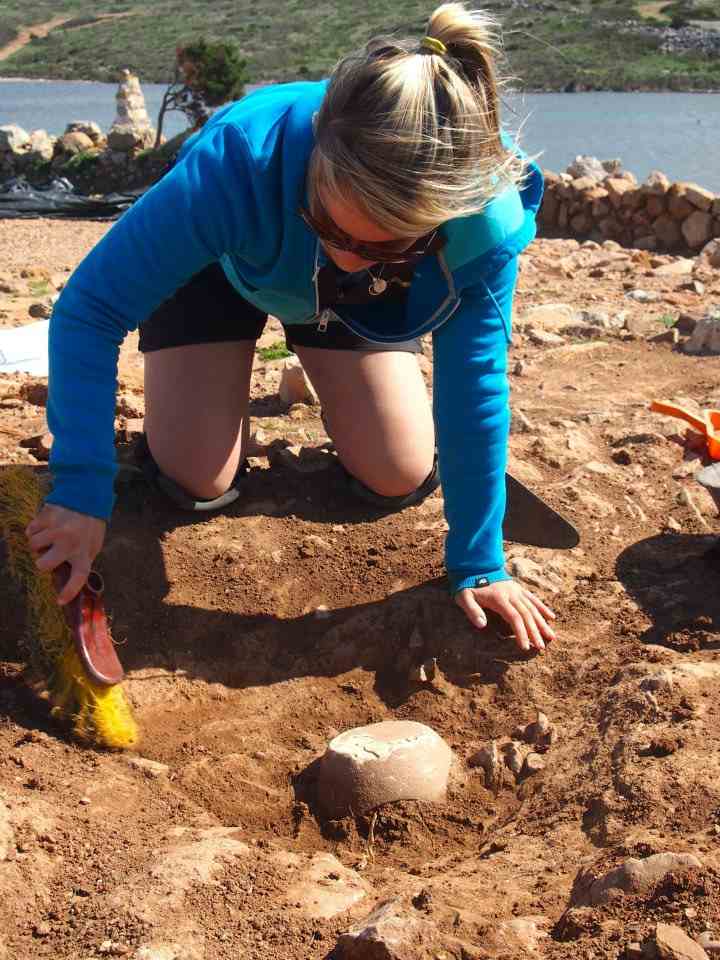I confess to not being a pottery person. What gets my neurons firing are human remains and the stories that these ancient remnants of life can tell about a persons life and environment. Earlier this year in Osteology, where we studied both human and comparative skeletal anatomy and pathologies, I mentally declared myself a bones person and scoffed at recovering something as menial and commonplace as pottery. But this class is giving me a new appreciation for pottery specifically and the material culture in general, without which bones would have no cultural context for interpretation.
The wealth of information that you can learn from a single pottery sherd (again, I am spelling this correctly, it is the proper term for a fragment of pottery), provided that it shows significant diagnostic traits, is quite remarkable. A single piece of pottery can help in determining chronology for a site or a stratigraphic layer, the trade routes that passed through a site, where the pots were made and how far they traveled, what technology was available in the production of those pots, which goods were used and in what quantity, which in turn can help determine the demographics of a population. All that from an old piece of clay! I am genuinely amazed by all the information that can be deduced from a piece of pottery that has been preserved since 4th century CE. Because of the wealth of information and the knowledge that is required to interpret it correctly, I have a new and well-deserved appreciation for the analysis of this aspect of material culture.
But I am not about to be the person that specializes in pottery. Part of what makes me hesitant is the “significant diagnostic traits” part. Such a trait could be a rim, a base or a handle, in descending order of importance. But the vast majority of pottery sherds that we encounter are pieces of the body that hold little diagnostic information. Excavating up in The Jungle, what we have termed the topsoil area that half of our class is working to excavate, yields pottery fragments that are rarely longer than my thumb and primarily pieces of the body. So though we are coming across a fair amount of pottery, it is rarely something that will add to the already extensive body of information provided by larger pottery sherds. Those pieces being excavated in the lower stratigraphic levels, where sherds are much larger and still contain distinct rims or whole bases. These are pieces to be excited about, not the little guys that frequent the baskets in The Jungle.
Only a week into the class and I already recognize the error of my initial perceptions of pottery and its importance to material culture. Still, if I continue on and specialize in anything, I can promise you that it will not be pottery. I’ll leave that to someone with the patience of a nun and the accuracy of a surgeon.
Find of the Day:
Tawny found and successfully excavated an intact base to a pot about 20 cm in diameter. The pot could be as old as 1500 years old and is a pretty unusual for two reasons: 1) because it is uncommon to find pieces this large and in this good of shape and 2) because it was found upside down. How the heck did that happen?
